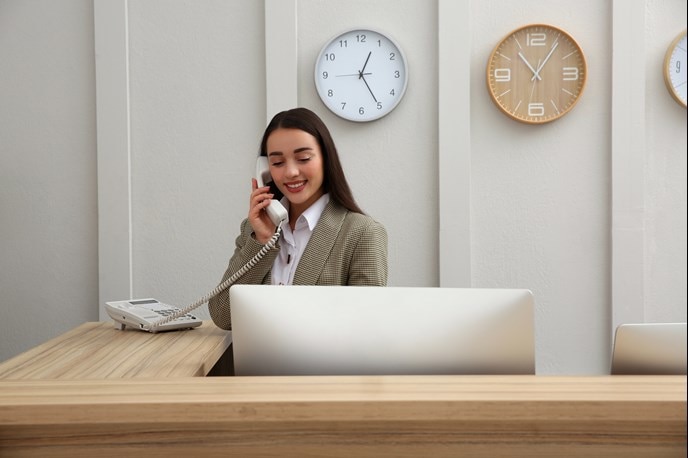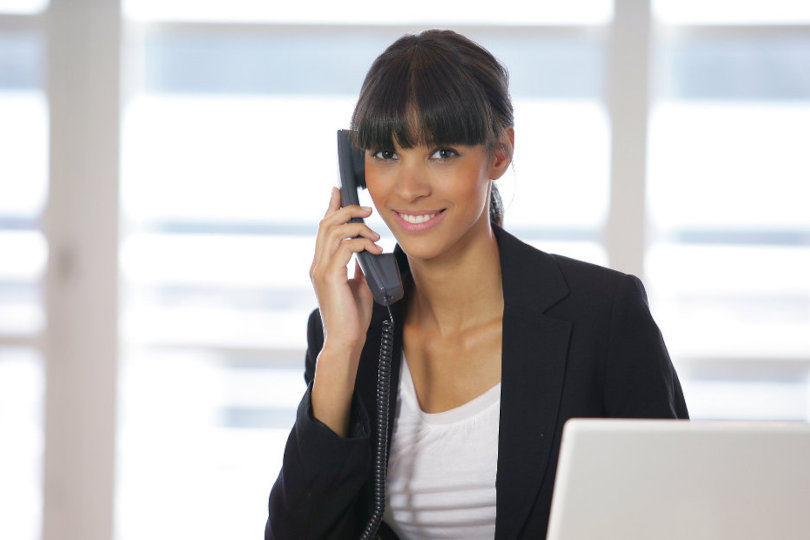All Categories
Featured
Table of Contents
- – What Is The Best Temporary Or Short-term Call A...
- – What Is The Best Answering Services 101: Every...
- – How Much Should I Pay For How Does An Answerin...
- – Who Is The Best Faqs - The Phone Answering Pr...
- – What Is The Best Call Service: 24/7 Live Phon...
- – What Is The Best What Is An Answering Servic...
What Is The Best Temporary Or Short-term Call Answering Services Deal Right Now
This gadget and its followers were developed by Sava Jacobson, an electrical engineer with a personal consulting service. While early voice mail used magnetic tape technology, many contemporary devices uses solid state memory storage; some devices use a combination of both, with a solid-state circuit for the outbound message and a cassette for the inbound messages.
"toll conserving" below) (phone call answering). This works if the owner is screening calls and does not want to speak to all callers. In any case after going, the calling party should be notified about the call having actually been responded to (in most cases this begins the charging), either by some remark of the operator, or by some greeting message of the little bit, or dealt with to non-human callers (e.
This holds particularly for the Littles with digitally saved greeting messages or for earlier devices (prior to the rise of microcassettes) with an unique unlimited loop tape, separate from a second cassette, dedicated to recording. There have been answer-only gadgets with no recording capabilities, where the greeting message had to inform callers of a state of present unattainability, or e (professional phone answering service).
What Is The Best Answering Services 101: Everything You Need To Know ... On The Market Now

about availability hours. In taping Littles the greeting typically includes an invite to leave a message "after the beep". An answering machine that utilizes a microcassette to tape-record messages On a dual-cassette answerphone, there is an outbound cassette, which after the defined number of rings plays a pre-recorded message to the caller.
:max_bytes(150000):strip_icc()/how-to-answer-the-phone-properly-2947153-5bd5229bcf254db794ebd49e2ba1652f.png)
Single-cassette answering devices consist of the outbound message at the start of the tape and incoming messages on the staying area. They initially play the announcement, then fast-forward to the next available space for recording, then record the caller's message. If there are many previous messages, fast-forwarding through them can trigger a substantial hold-up.
This beep is often referred to in the greeting message, asking for that the caller leave a message "after the beep". Littles with digital storage for the taped messages do disappoint this hold-up, of course. A little might use a push-button control facility, whereby the answerphone owner can ring the house number and, by getting in a code on the remote telephone's keypad, can listen to recorded messages, or delete them, even when far from home.
How Much Should I Pay For How Does An Answering Service Work??

Thereby the device increases the variety of rings after which it answers the call (typically by two, leading to 4 rings), if no unread messages are presently kept, but answers after the set number of rings (usually 2) if there are unread messages. This permits the owner to discover whether there are messages waiting; if there are none, the owner can hang up the phone on the, e.
Some makers also allow themselves to be from another location activated, if they have been switched off, by calling and letting the phone ring a particular large number of times (normally 10-15). Some service providers desert calls already after a smaller sized number of rings, making remote activation difficult. In the early days of TADs an unique transmitter for DTMF tones (dual-tone multi-frequency signalling) was regionally needed for remote control, considering that the previously employed pulse dialling is not apt to convey suitable signalling along an active connection, and the dual-tone multi-frequency signalling was carried out step-by-step.
Any inbound call is not identifiable with regard to these homes in advance of going "off hook" by the terminal equipment. So after going off hook the calls must be changed to proper gadgets and only the voice-type is instantly accessible to a human, however perhaps, however need to be routed to a TAD (e.
Who Is The Best Faqs - The Phone Answering Provider In My Area
What if I told you that you do not have to actually pick up your device when addressing a consumer call? Another person will. So convenient, right? Addressing call does not require someone to be on the other end of the line. Effective automated phone systems can do the trick just as efficiently as a live representative and often even much better.
An automatic answering service or interactive voice response system is a phone system that communicates with callers without a live person on the line - business answering service. When companies use this innovation, customers can get the response to a concern about your company just by utilizing interactions established on a pre-programmed call flow.
Although live operators update the customer care experience, lots of calls do not need human interaction. An easy taped message or directions on how a consumer can recover a piece of information normally solves a caller's instant requirement - virtual call answering service. Automated answering services are a simple and reliable method to direct inbound calls to the right individual.
What Is The Best Call Service: 24/7 Live Phone Answering Services For Small ... Service?
Notice that when you call a company, either for support or item questions, the first thing you will hear is a pre-recorded voice greeting and a series of choices like press 1 for consumer service, press 2 for questions, and so on. The pre-recorded choices branch out to other choices depending on the customer's selection.
The phone tree system assists direct callers to the best individual or department utilizing the keypad on a cellphone. In some instances, callers can utilize their voices. It's worth keeping in mind that auto-attendant alternatives aren't limited to the ten numbers on a phone's keypad. As soon as the caller has actually selected their very first choice, you can design a multi-level auto-attendant that uses sub-menus to direct the caller to the best type of assistance.
The caller does not need to interact with an individual if the auto-attendant phone system can manage their concern. The automatic service can route callers to an employee if they reach a "dead end" and need help from a live agent. It is pricey to work with an operator or executive assistant.
What Is The Best What Is An Answering Service? Product?
Automated answering services, on the other hand, are significantly less costly and provide considerable expense savings at approximately $200-$420/month. Even if you do not have dedicated staff to handle call routing and management, an automated answering service improves performance by allowing your team to focus on their strengths so they can more effectively invest their time on the phone.
A sales lead routed to customer support is a lost shot. If a customer who has item questions reaches the wrong department or gets incomplete answers from well-meaning employees who are less trained to manage a particular kind of question, it can be a reason for aggravation and dissatisfaction. An automatic answering system can lessen the number of misrouted calls, consequently assisting your workers make better usage of their phone time while maximizing time in their calendar for other tasks.
With Automated Answering Systems, you can create an individualized experience for both your personnel and your callers. Make a recording of your primary greeting, and just upgrade it routinely to show what is going on in your organization. You can produce as numerous departments or menu choices as you want.
Table of Contents
- – What Is The Best Temporary Or Short-term Call A...
- – What Is The Best Answering Services 101: Every...
- – How Much Should I Pay For How Does An Answerin...
- – Who Is The Best Faqs - The Phone Answering Pr...
- – What Is The Best Call Service: 24/7 Live Phon...
- – What Is The Best What Is An Answering Servic...
Latest Posts
Affordable Medical Answering Service Near Me ( Sydney)
Outstanding Call Answering Service – VIC 3008
Automated Answering Service – Sydney
More
Latest Posts
Affordable Medical Answering Service Near Me ( Sydney)
Outstanding Call Answering Service – VIC 3008
Automated Answering Service – Sydney